Exploring the Invisible Universe Through the Power of Infrared
All English text on this page has been translated automatically. Some sentences may be unnatural.
We live each day bathed in light from the universe—the dazzling rays of the Sun, the rising Moon at dusk, and the stars that illuminate the night sky. Each time we look upward, questions may cross our minds: What lies beyond the stars? Where did we come from? These are enduring curiosities that humanity has never abandoned since ancient times. Specially-appointed Professor Takao Nakagawa of the Space Astronomy Laboratory at the Institute of Science and Technology seeks to unravel the history and evolution of the universe through infrared astronomy.
Nakagawa specializes in infrared astrophysics. When people think of astronomical observation, they often imagine peering into a large optical telescope. But in infrared astrophysics, telescopes are not used to look directly with the eyes. As the name suggests, this field involves detecting infrared light from outer space, collecting and analyzing information on star formation and cosmic evolution. What appears to be a dark night sky to the naked eye reveals a completely different view through infrared observation—bright regions scattered throughout. “Infrared images highlight areas that emit heat. For example, if you take two identical cans of coffee in a normal photo, they may look the same. But in an infrared image, the hot coffee will appear bright. We use this principle to observe celestial objects,” the professor explains.
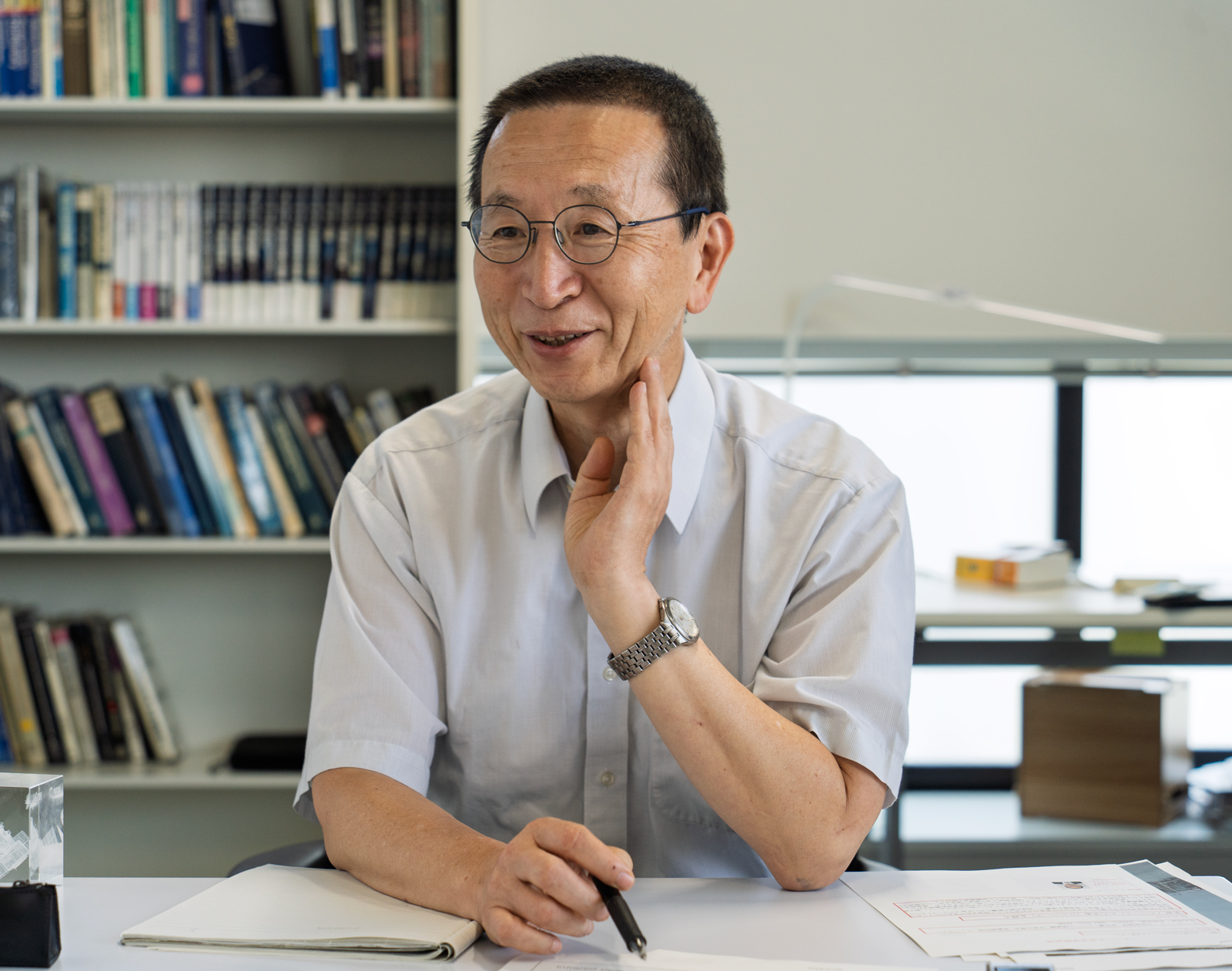
Earth’s atmosphere blocks most infrared light from space. Even the small fraction that passes through is often overwhelmed by infrared radiation emitted by Earth’s own warm atmosphere, making it difficult to detect the faint signals from space. To overcome this, scientists launch observation satellites into space. Out there, interstellar gas and countless solid particles less than one micron in size—known as cosmic dust—float between the stars. This dust scatters and absorbs starlight, blocking visible-light observations. However, infrared light, with its longer wavelength, can penetrate the dust, allowing astronomers to observe distant objects—even into the heart of our galaxy. Infrared light is also ideal for observing extremely distant objects. “Visible-light observations can only reach relatively nearby regions within our galaxy. Observing distant objects is equivalent to looking back to the early universe, enabling us to uncover its evolutionary history,” he says.
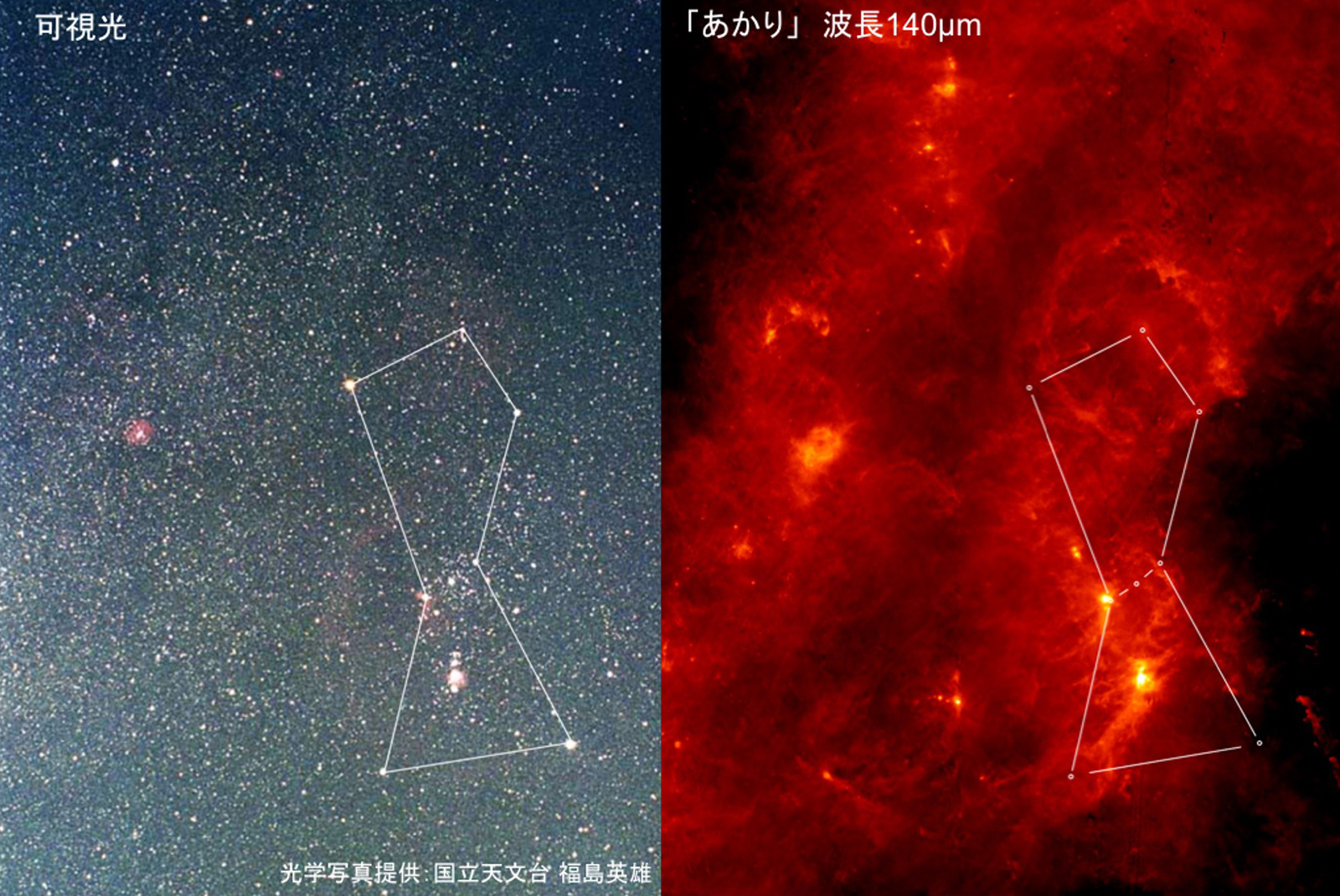
Nakagawa is currently working on the VERTECS mission, an ultra-small astronomical satellite developed in collaboration with the Japan Aerospace Exploration Agency (JAXA), Kyushu Institute of Technology, Kwansei Gakuin University, and others. The team aims to launch the satellite in fiscal year 2025. The target of observation is the cosmic background radiation—light and electromagnetic waves emitted by all celestial objects from the birth of the universe to the present day. This radiation is a key source of information about the formation and evolution of cosmic structures. Past observations have revealed that the brightness of the cosmic infrared background is two to three times greater than the total brightness of all known galaxies, suggesting the existence of unknown celestial objects that emit this faint glow.
The VERTECS mission will use multi-wavelength observation—capturing data in various colors and wavelengths of visible light—to identify the true nature of these mysterious objects. The satellite itself is remarkably compact, only slightly larger than an A4 sheet of paper. While traditional space science missions require long development times and enormous budgets, ultra-small satellites like VERTECS can be developed and launched in a short period at lower cost. “In the past, even when we had new ideas, it took a long time before we could actually observe them. With ultra-small satellites, we can make them a reality much sooner, which I hope will lead to new breakthroughs in space science. Data from this satellite will be received and analyzed using an antenna on the roof of our university,” he explains.
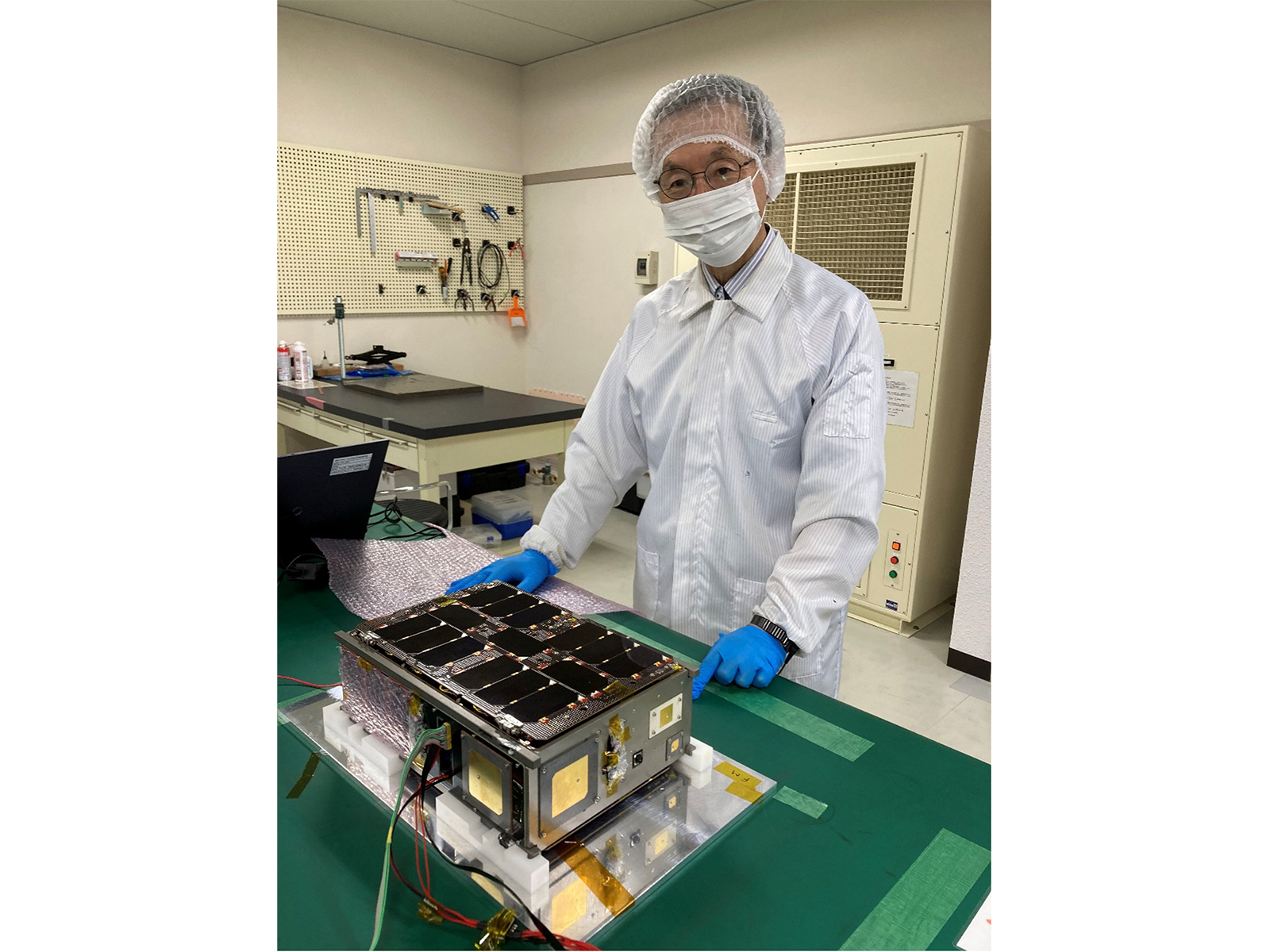

Another of Nakagawa’s research themes is the snow line—the boundary in a star’s protoplanetary disk that separates regions where water exists as vapor from regions where it exists as ice. In our solar system, planets are classified into two types: rocky (terrestrial) planets like Mercury, Venus, Earth, and Mars, which are composed mainly of rock and metals; and gas giants like Jupiter, Saturn, Uranus, and Neptune, which are massive—over four times Earth’s diameter and more than ten times its mass—without solid surfaces. The snow line is believed to be the key to why these two very different types of planets formed. The prevailing hypothesis is that rocky planets formed inside the snow line, while gas giants formed outside it. “To determine the presence and location of the snow line, we conduct high-dispersion infrared spectroscopy. High-dispersion spectrometers are typically large, but by using a technology called immersion gratings—which shorten the wavelength of incoming light—we can miniaturize them and eventually mount them on satellites,” he says.
His fascination with space began when he watched the live broadcast of Apollo 11’s Moon landing. Later, his encounter with physics deepened his commitment to pursuing astronomy. “In English, there are several words for the cosmos—‘space,’ ‘universe,’ and so on. What I want to understand is the universe in its entirety: everything that exists within it. That’s why I send satellites into space. Humanity may be tiny compared to the universe, but by actually observing it, I want to find out whether what we’ve believed is truly correct.”
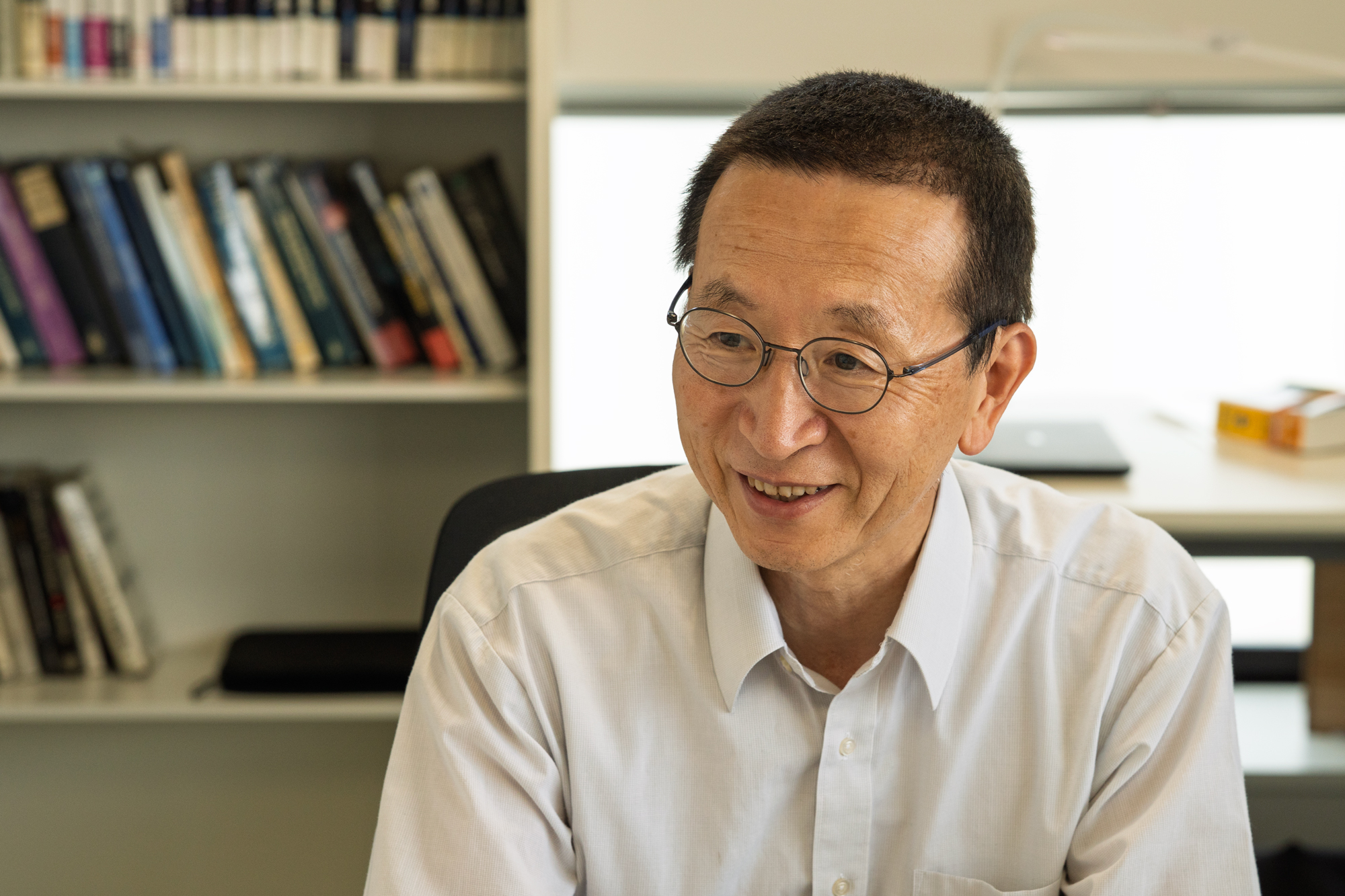
Why do humans seek to understand the universe? Perhaps it is because, in exploring an endless cosmos, we hope to find something beyond the boundaries of daily life. The “faint light” captured by the satellites and instruments he has developed shines powerfully on our world, revealing the existence of life—us humans—on this small planet.
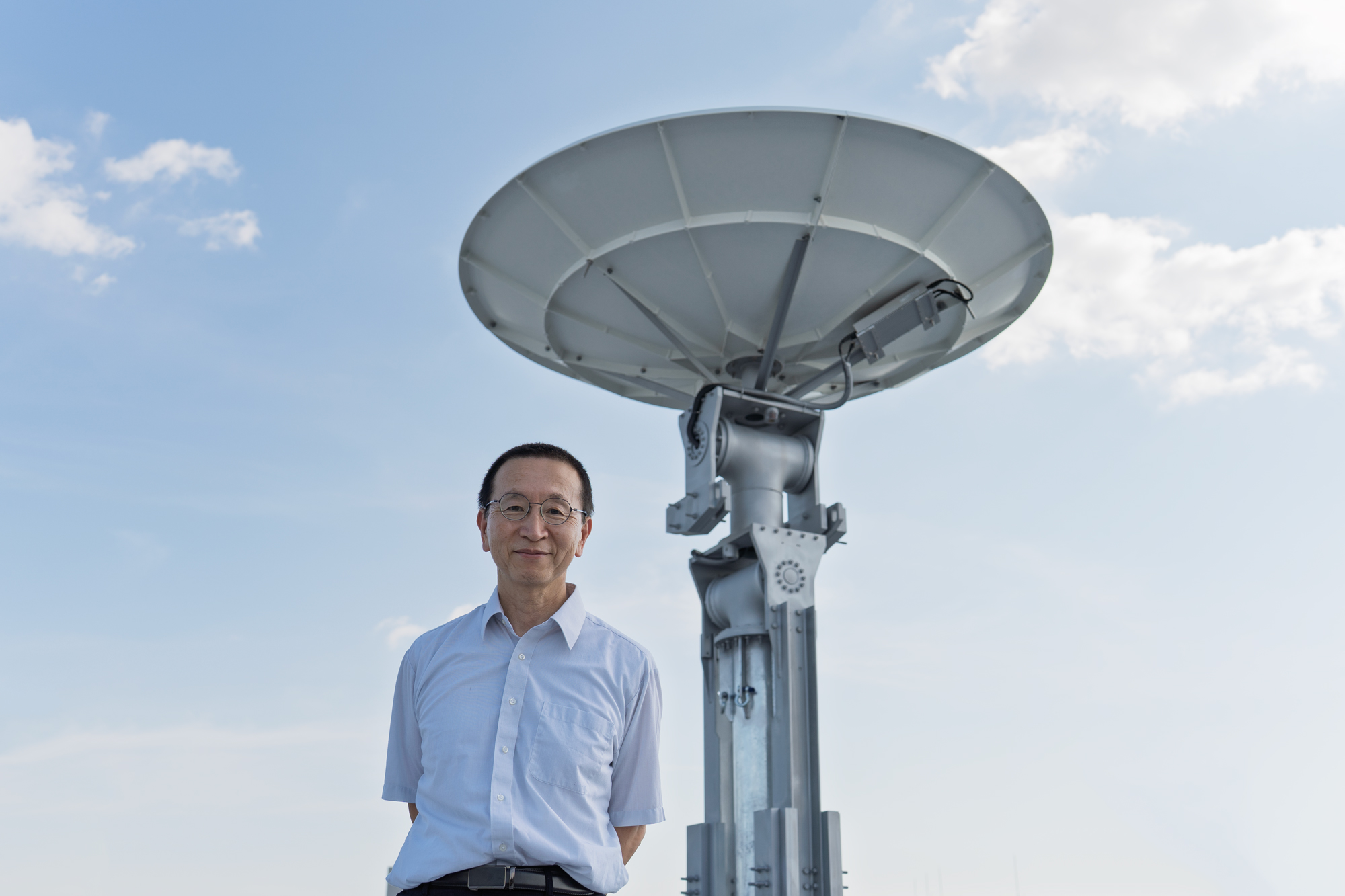
Specially-appointed Professor at the Space Astronomy Laboratory, Institute of Science and Technology, and the Center for Space Science, Tokyo City University. He earned his Ph.D. in Science in 1988 from the Department of Astronomy, Graduate School of Science, the University of Tokyo. After serving as Professor in the Department of Physics, Graduate School of Science, the University of Tokyo, and as Professor at the Institute of Space and Astronautical Science (ISAS), Japan Aerospace Exploration Agency (JAXA), he joined Tokyo City University in April 2025.
